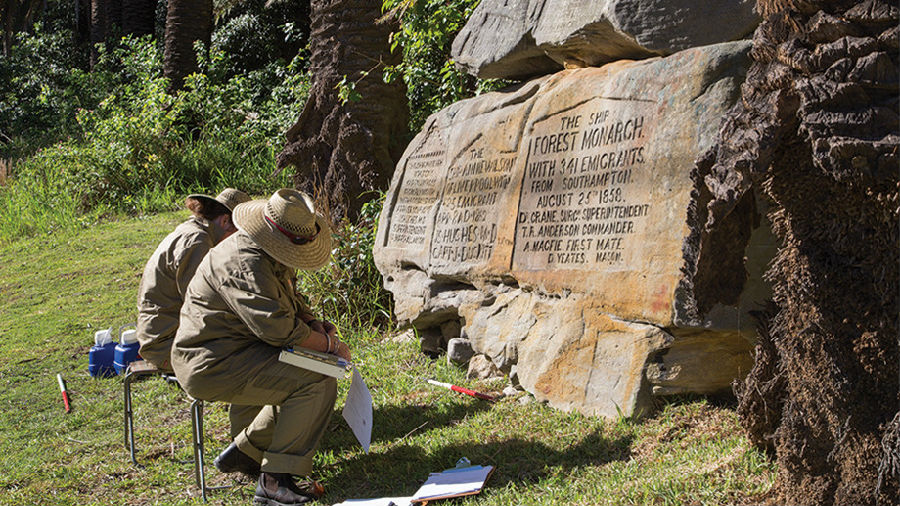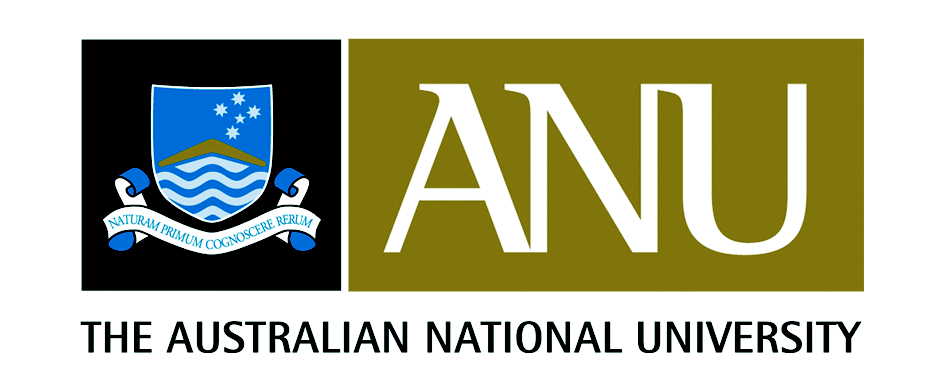


ANU archaeologist and artist Dr Ursula Frederick awarded the 2017 NSW Premier's History Prize
A book co-written by ANU archaeologist and artist Dr Ursula Frederick exploring the history of Sydney's North Head Quarantine Station has been awarded the 2017 NSW Premier's Community and Regional History Prize.
Stories from the Sandstone: Quarantine Inscriptions from Australia's Immigrant Past tells the tales of individuals and families who arrived by ship and were detained at the quarantine station between 1832and 1984.
Dr Frederick and her colleagues from the University of Sydney investigated the markings and inscriptions made by some of the passengers in the sandstone surrounding the station.
Dr Frederick led the fieldwork and ensured the team found and documented as many historic inscriptions as they could. She also served as the project photographer, aiming to capture and evoke the sense of the quarantine station landscape as it is now.
"The inscriptions were always our starting point, our 'porthole' to use a maritime analogy, into the past," Dr Frederick says.
"The information gleaned from this archaeology, such as a person's name and the ship they were on, were then investigated further by historian Dr Peter Hobbins and our research assistants using archival sources.
"In doing so, more detail about the people 'behind' these rocks came to light."
One was 16-year-old John Dawson, who emigrated from Britain with his parents and siblings.
"John kept a shipboard diary and wrote in it most days talking about the weather and the food mostly - as you do," Dr Frederick says.
An outbreak of smallpox on board led John and his family to be quarantined at the station. His last diary entry, made on the day they entered quarantine, records the death of a baby from small pox, around the same time another baby was born.
"This powerful summation of the cycle of life and death reveals the stark realities of immigration, and health conditions of the time," Dr Frederick says.
"It also signals a new start for John's family and life in a new land."
The inscription John left on a cliff close to the beach commemorated his family's arrival and that they were there 'to perform quarantine'.
"This remains the oldest inscription we have located, from 1835, and it's barely visible today, so it's not visually compelling like many of the others," Dr Frederick says.
"But I like the story because for me it neatly stitches together the history and archaeology threads that underpin our entire project."
Stories of individuals such as John and his family, along with social and cultural groups, shed light on some of the larger issues then at play.
"For example, through this collection of stories we communicate some of the history of early immigration to the colonies, global maritime trade, disease control and management in Australia, and the various government policies and social and cultural issues that existed, such as class inequalities, racism and other perspectives," Dr Frederick says.

The team's findings were also a reminder of how multicultural ships in the early 19th century were.
"There are inscriptions in Dutch, Greek, Japanese, Arabic, Chinese, Indonesian and other languages," she says.
"The sheer number of 'places' mentioned - where people or ships came from - reveals that Australia was actually part of a bustling global community not isolated on the edge of the world, as it is so often depicted."
Stories from the Sandstone was the result of an Australian Research Council linkage grant between the University of Sydney and Mawland; the company who manage the lease of the Quarantine Station.
Dr Frederick describes her and co-authors Dr Peter Hobbins and Associate Professor Anne Clarke as having been surprised and excited to have won the NSW Premier's History Award. She acknowledged too, the help of many individuals and organisations that assisted in the research.
"It's an honour not only for us as individuals but also for the interdisciplinary approach of our research," Dr Frederick says.
"That's really pleasing, to have that collaborative and interdisciplinary approach rewarded in this way."
Source: http://www.anu.edu.au